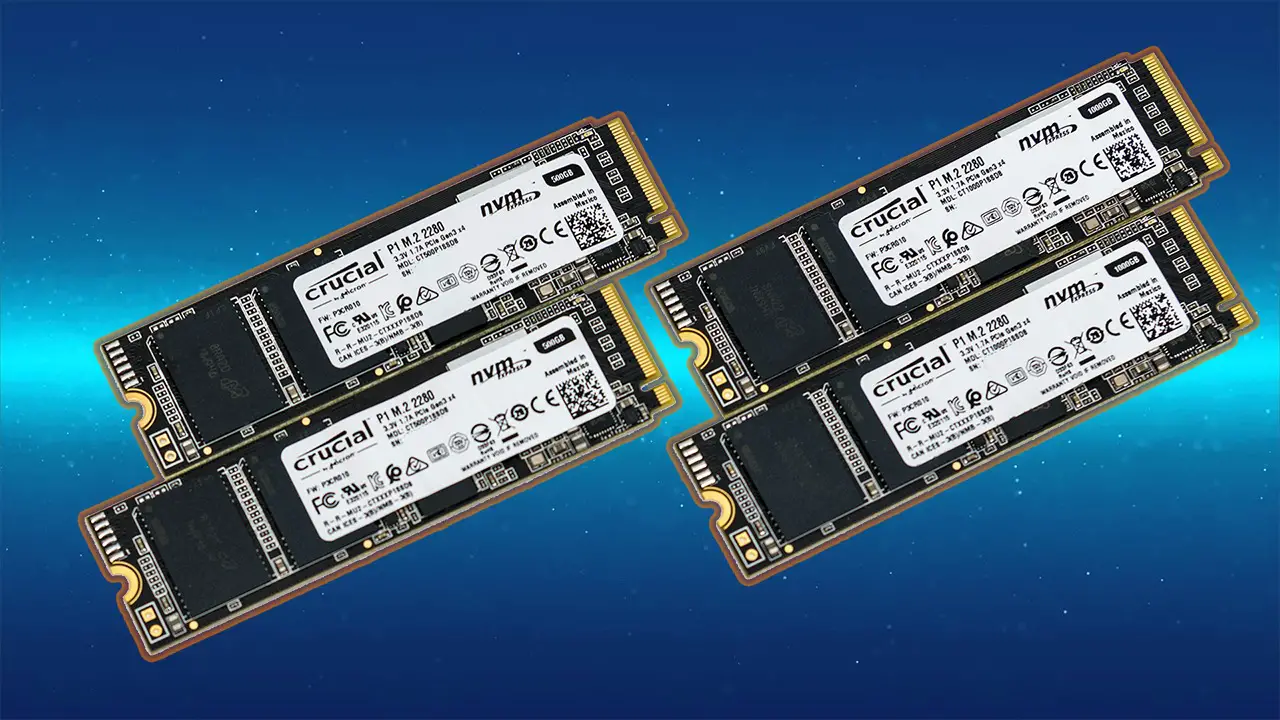
Let us start with what the two capacity versions of the Crucial P1 series has in common. First, both use the exact same shipping container. The only difference is the labels on the box. The 500GB obviously says ‘500GB’ instead of ‘1000GB’ and the model number is different. That is it.

The accessories are also the exact same. That is to say the 500GB capacity version is also lacking in the M.2 screw, but includes a free (download) copy of Acronis and comes with a small pamphlet.
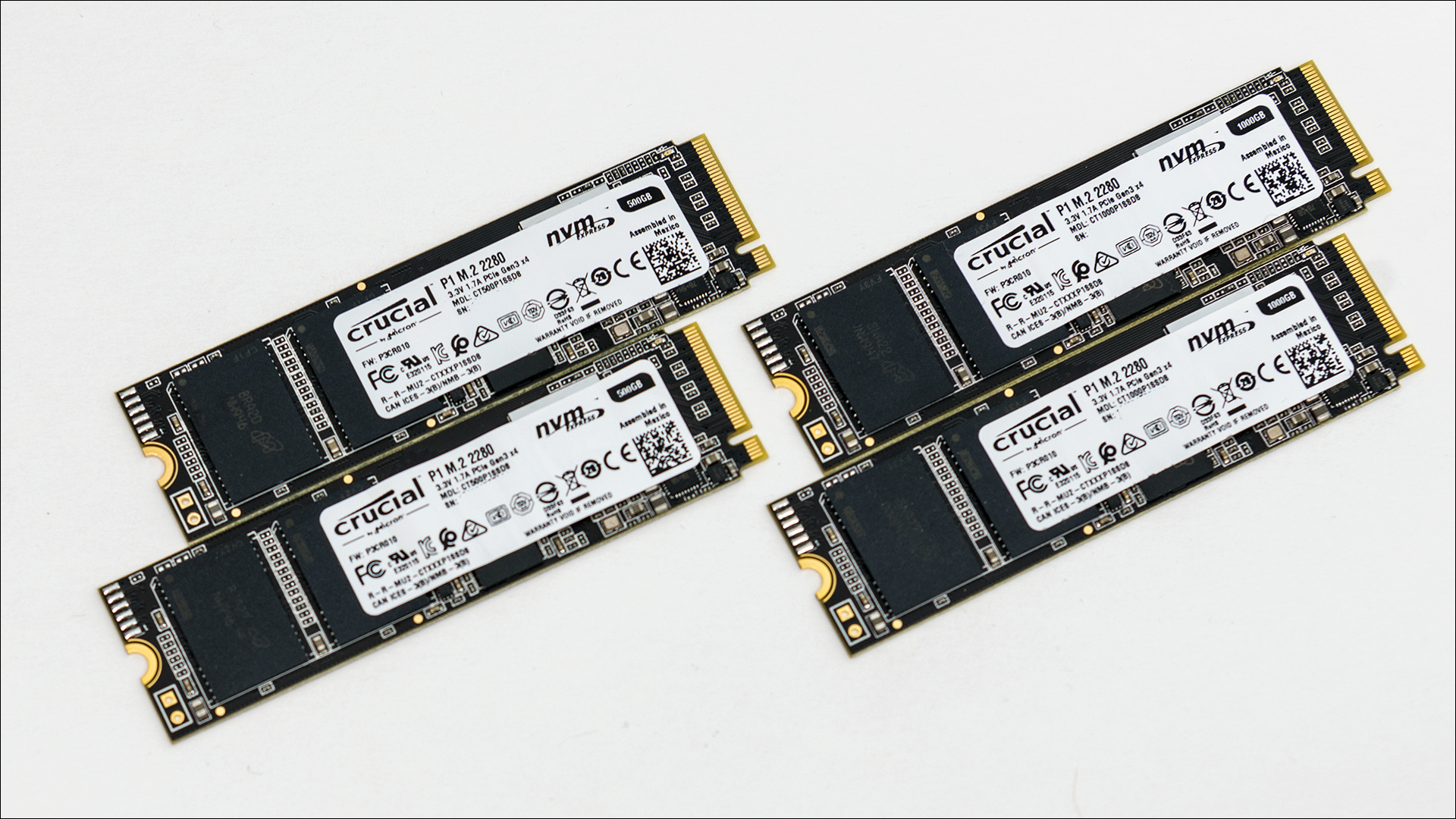
The layout and the design of the 500GB P1 is also the same. Just like the P1 1TB model, the 500GB P1 uses a single sided M.2 2280 form-factor PCB. The one side houses the SMI 2263ENG controller, a single DDR3 RAM IC, and two IMFT CMOS Under Array (CuA) QLC NAND ICs.
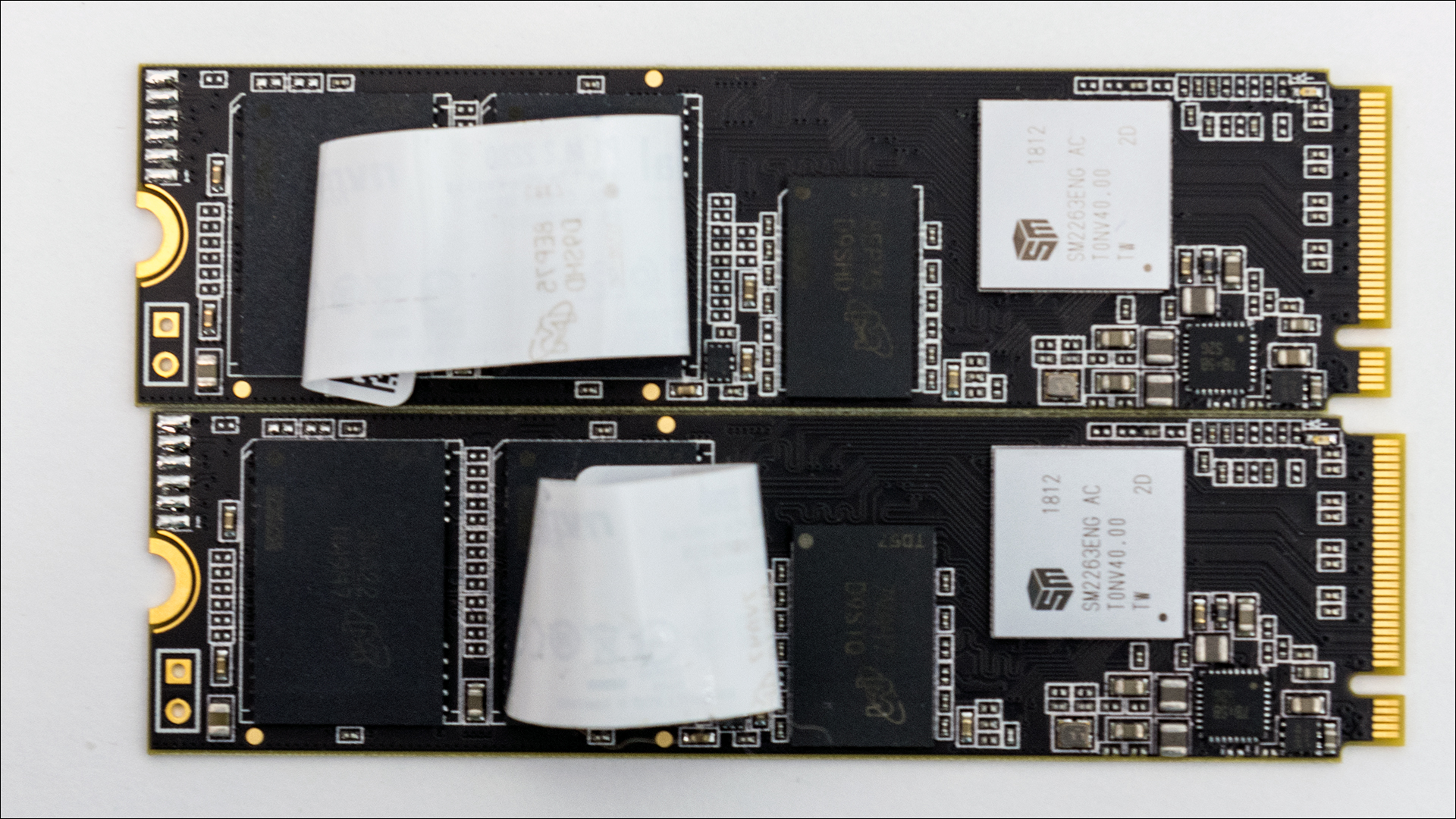
Also the same, the label covering the controller and NAND is paper only with no integrated copper heat spreader / heat strip. This missing detail does make the P1 series run hotter than some, more aggressive in its thermal throttling, and generally means it takes longer to cool down when only passively cooled. Put another way the P1 series really like to be pampered, either through a motherboard or aftermarket heatsink, or having a fan pointed at them.

Where they differ is in a few key areas. The 500GB’s two NAND ICs obviously have half the capacity of the 1TB models. Basically, instead of quad-die / 256-layers of NAND per ‘chip’, the 500GB’s are dual-die or 128 layers of NAND per chip. This means they do run a bit cooler than the 1TB’ers but the difference is not overly significant.
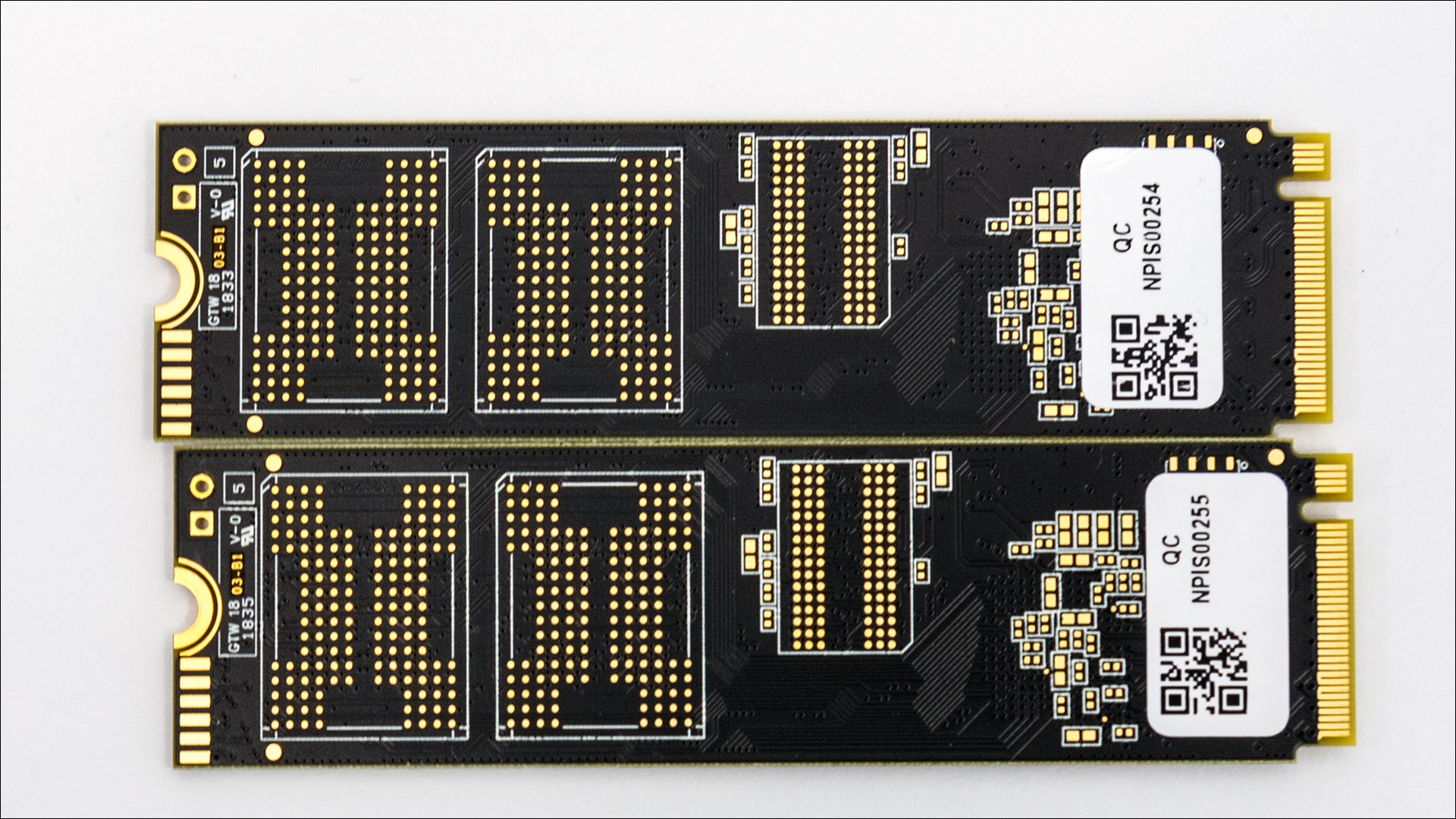
What is significant is the pSLC size the 500GB comes with. The entire P1 series uses a variable-sized pseudo-SLC buffer for short-term read and writes. This pSLC buffer takes stress off the QLC NAND and boosts performance significantly. So significantly that two NAND ICs are capable of nearly 2GB/s read levels. Yes pSLC is a big deal. However, since the size of the pSLC buffer is directly tied to the percentage of free space and total capacity, the P1 1TB model comes with a much beefier pSLC buffer. To be precise when at nearly full capacity the 1TB still will have a pSLC buffer that is still 12GB in size. The 500GB on the other hand will only have 5GB dedicated to pSLC… which is only 41.7 percent of the 1TB. This is actually the most extreme the difference will be and at most before this the 500GB’s pSLC is basically fifty percent of the 1TB model. Put another way, the 500GB’s pSLC starts smaller and gets smaller faster than the 1TB P1 capacity model. Either way the 1TB is more geared towards enthusiasts who will hammer their drive. Whereas the 500GB is for more average users… average users who actually do the average 10GB or less of writes per day to their OS drive.
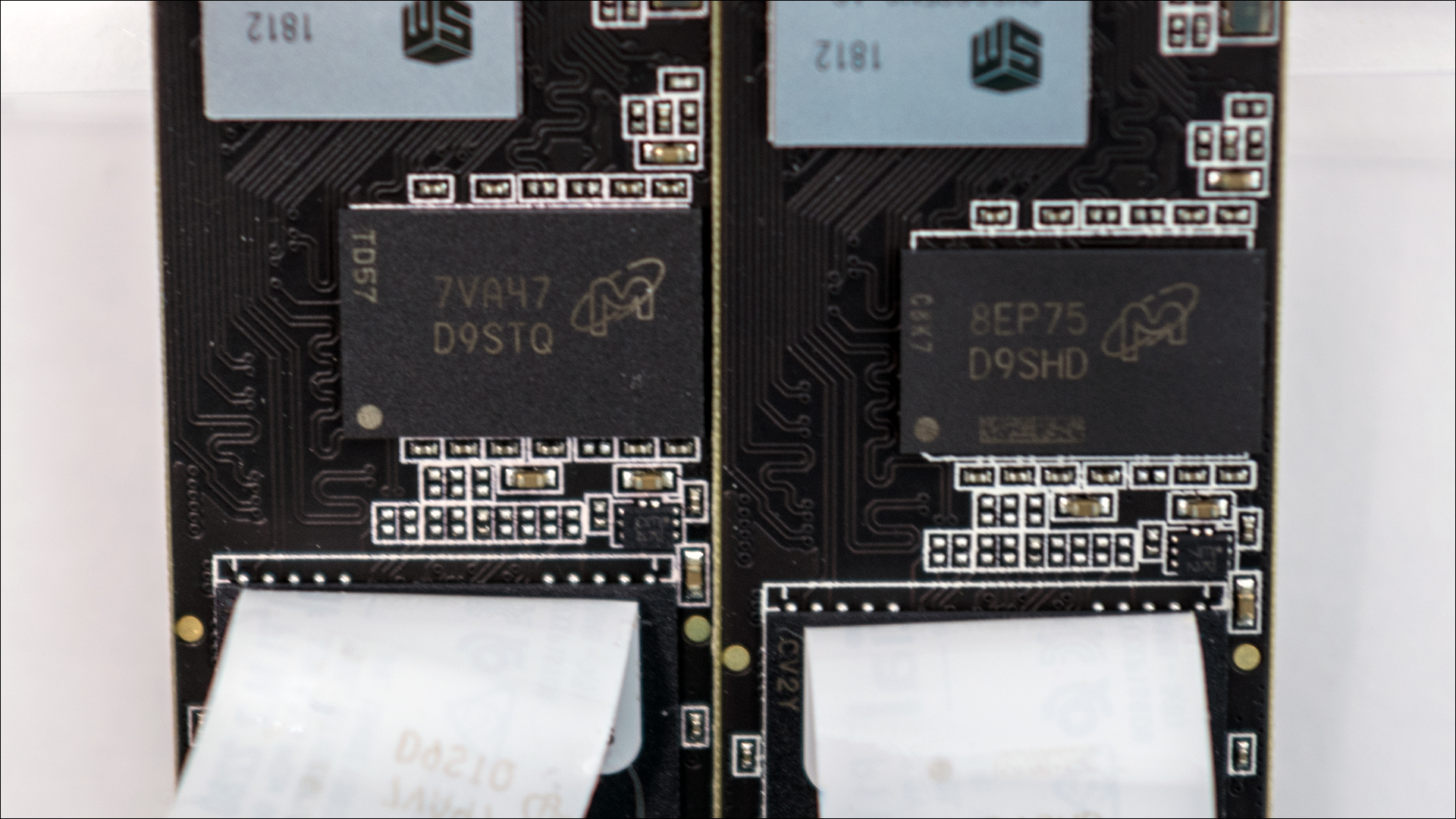
The 500GB also only has half the onboard RAM. Instead of a single 1GB DDR3 RAM cache buffer, the 500GB comes with ‘only’ 512MB. This is still a nice sized buffer but it can become saturated faster than the 1TB version. Most will not notice the difference but if you are a power user… it can become a – small – issue.
These variances translate into two key differences. The first is durability. The P1 1TB is rated for a moderate 200TB of total bytes written… while the P1 500GB capacity option is only rated for 100TB. 100TB is still a lot of writes but it is noticeably less than most. Also noticeable is the write performance of these two models. The P1 1TB is rated for ‘up to’ 1700MB/s, whereas the 500GB P1 is only rated to 950MB/s. Still fast, but not that fast. Thankfully the difference in read performance is almost negligible at 2K vs 1.9K. For most users read performance is what critical, so while writing will be noticeably slower overall system performance will be very similar between the two capacity versions.
In return for these differences buyers literally only have to spend half the amount of money to get the P1 500GB. That does make for an interesting question. For the same cost as one P1 1TB those willing to think outside the box can get two 500GB P1s… which means the same amount of NAND but paired to two controllers instead of one. Needless to say the results in the coming pages are very, very interesting and we want to thank Crucial for sending a second 500GB model so late into this review cycle.
